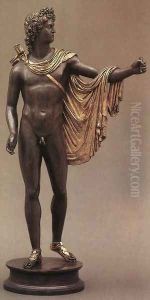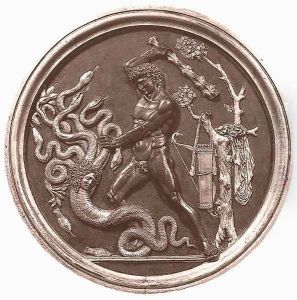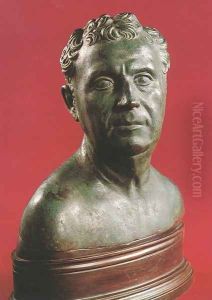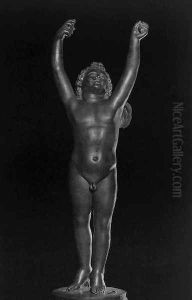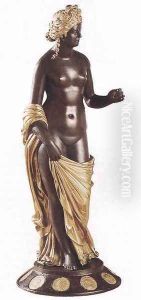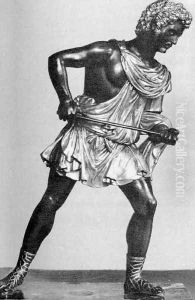Antico Paintings
Pier Jacopo Alari Bonacolsi, known as Antico, was an Italian sculptor from the Renaissance period. Antico was born around 1455 in Mantua, Italy, into an era where the arts were flourishing under the patronage of wealthy and powerful families such as the Gonzagas, who ruled Mantua.
Antico initially trained as a goldsmith, and his early works exhibit a meticulous attention to detail and a penchant for precious materials, characteristics that would define his later sculptural work. His nickname 'Antico' reflects his admiration for the art of classical antiquity. He was deeply influenced by the rediscovery of ancient Roman art, which was being unearthed in Italy during his lifetime, and he sought to revive the classical ideals of beauty and proportion in his work.
During his career, Antico became highly regarded for his bronze statuettes, which were prized among the courts of Italy for their exquisite craftsmanship and classical elegance. These small-scale works were often based on ancient models or inspired by the works of other Renaissance artists. Antico's bronzes were notable for their sophisticated finishes, including gilding and silvering, which further enhanced their appeal to his noble patrons.
Antico's work reflects the transition from the Gothic style to the more classical and humanistic approach of the Renaissance. He blended the naturalism that was becoming a hallmark of Renaissance art with the harmonious ideals found in ancient sculpture. His patrons included members of the Gonzaga family, particularly Isabella d'Este, one of the most prominent art patrons of the time, as well as other Italian nobility.
Over time, Antico's reputation grew, and he was granted the title of 'camerlengo', or chamberlain, by the Gonzaga court, a position that offered him both status and financial security. Despite his success, there is relatively little documentation on his life, and much of what is known about him is derived from the study of his surviving works.
Antico died in 1528 in Mantua. His legacy is seen in the influence he had on the development of bronze sculpture in the Renaissance, as well as in the continued appreciation for small-scale, classical-inspired bronzes that persisted into the late Renaissance and beyond. Today, his works are held in numerous museum collections around the world, testifying to the enduring quality and appeal of his artistry.
